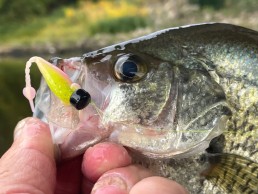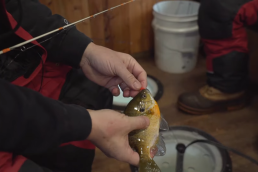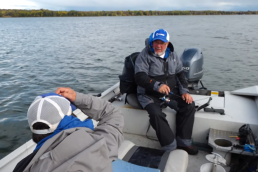Panfish Bait of the Future?
SHARE THIS POST
Even among the nation’s best bass anglers, words like big crappies attract a captive audience. During tournament off-seasons or anytime they’re up for a change of pace, many bass fans go hot on the trail of their favorite panfish—silvery, palm-stretching wraiths evocatively known as “hubcaps.” Hundred-fish days and flaky-white fillets—battered, seasoned and sizzling in a skillet—prompt even the most jaded anglers to drop what they’re doing and beeline for the nearest crappie hole.
While driving home from his latest bass derby, Major League Fishing pro David Walker found himself daydreaming about his local crappie lake and the makings of an epic fish fry. “After a hectic bass tourney, I love coming home and catching a boatload of crappies with my daughters,” says Walker, a wizard with a small jig and softbait.
A lifelong panfish pursuer, Walker has discovered something exciting in the arena of soft plastic baits for crappies, perch and bluegills—an idea that occurred to him while fishing bass tournaments.
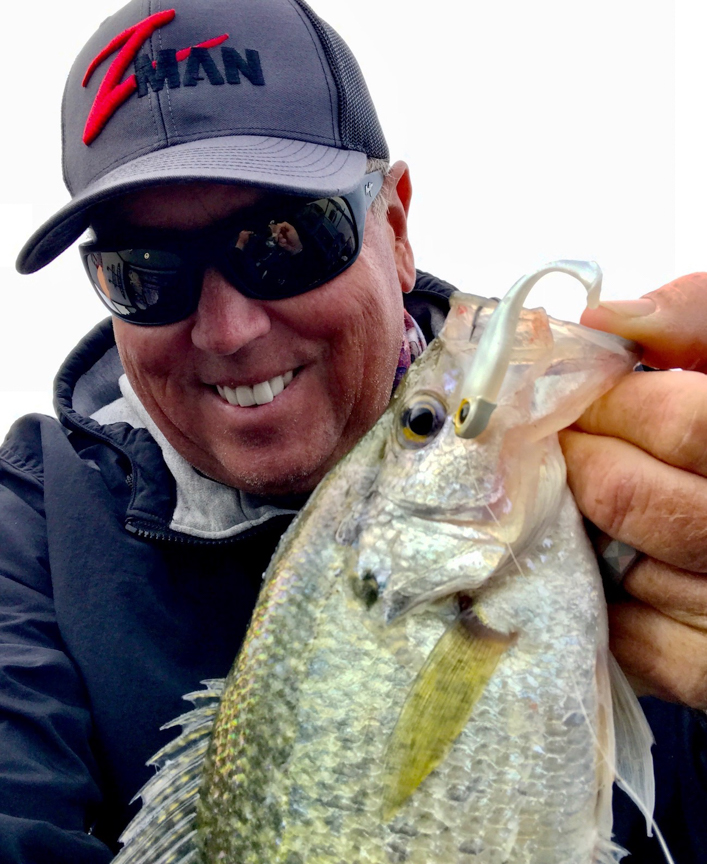
Superplastics
“When I first started throwing so-called ‘superplastics’ for bass, I quickly learned an almost magical advantage of the ElaZtech material: that panfish and other nuisance fish couldn’t peck the tails off the back of your bass jigs,” recalls Walker. “While bass fishing with traditional soft plastics, it’s always been a headache and major time waster when you’ve got perch, sunfish and other tail-pecking fish in the area. But using these ElaZtech baits, I realized panfish could peck them all they wanted. I could stay in the game, non-stop, without constantly grabbing and re-rigging a new bait.”
All the while, Walker was thinking about crappies. He knew that ElaZtech’s advantages held tremendous panfish potential. “This material is wonderfully soft and lively, making it easy to activate, so it moves and undulates fluidly in the water,” he notes.
“Like most anglers, I accepted for years that traditional panfish-sized soft plastics just don’t move that well underwater. Because they’re relatively rigid, traditional soft crappie baits tend to lose action the smaller you make them. So, you often had to resort to larger baits than you wanted or had to retrieve them faster to achieve the desired tail movement or the right swimming action. Neither are ideal for a fish that often exhibits size and speed selectivity in their feeding habits.
“When I started fishing ElaZtech, I was excited about its advantages for bass. But secretly, I couldn’t wait to throw the baits for panfish. Combine a super-soft, lively bait with crazy durability and you quickly appreciate what I’m saying. This stuff has all the makings of the perfect panfish bait.”
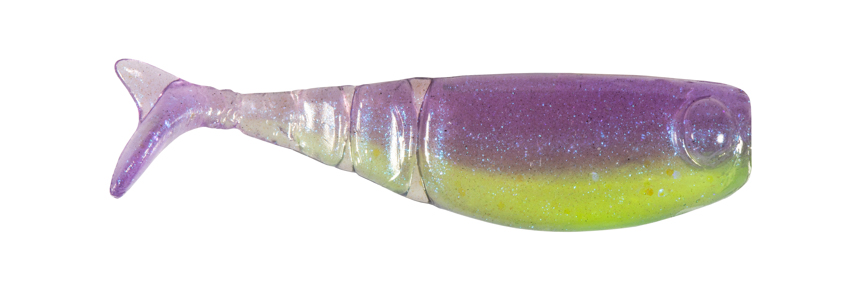
Slow-sink swimbaits
A few days after the finish of a recent bass tournament, Walker found himself on his favorite crappie lake. He spotted aqua-blue packs of Z-Man baits lying on his boat deck and a light bulb ignited. “I grabbed a pack of Shad FryZ— a slick, little, 1 3/4-inch paddletail swimbait— and put it on an 1/10-ounce Micro Finesse ShroomZ panfish jig. Almost immediately, it became my favorite crappie bait.”
From the first few casts, Walker noticed that the bait’s tail was easy to activate—even at slow retrieve speeds. “The Shad FryZ is one of those rare crappie-sized swimbaits whose tail will wag and thump even as it’s falling. Crappies can be really speed sensitive in terms of lure retrieves and drop speed. Too many traditional crappie baits require excessive speed to activate them; often, that’s too fast for crappies, especially in cooler water.”
Are you enjoying this post?
You can be among the first to get the latest info on where to go, what to use and how to use it!
Walker, a deep-thinking angler who’s always conjuring ways to maximize lure performance, suggests that bait buoyancy and rate-of-fall remain two ignored factors in the crappie-catching equation. “Consider that the natural buoyancy of the Shad FryZ slows its sink rate. So, while I can benefit from the extra casting weight of the 1/10-ounce jig, the rigged bait flutters and fishes more like a 1/16-ouncer. And it still exhibits that nice little tail kick on the fall that induces bites.
“As veteran anglers know, crappies primarily feed up,” Walker continues. “So, keeping your lure at or a few feet above their eye level is of utmost importance, especially in spring.”
Unlike traditional PVC soft plastics, which sink, Walker notes that ElaZtech baits float, slowing the drop-speed of the jighead. “That’s something you simply can’t do with other crappie baits, because traditional plastisol baits sink fast—often shooting right through the active strike zones of crappies and other panfish.”
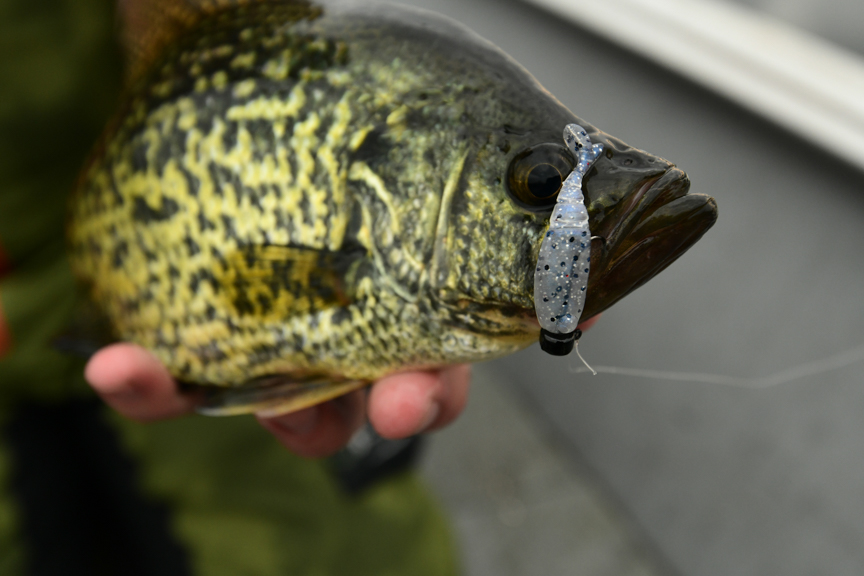
Softbait hacks
To further tweak rate of fall, Walker spools with “straight 6- or 8-pound test braided line and no leader,” he suggests. “After trying those micro-thin 2-, 3- and 4-pound test braids, I realized that thicker-diameter braid, which floats, slows the lure’s rate of fall a bit more.”
Walker adds a tip for creating a semi-permanent “lure” that catches dozens of fish without replacing the tail. “Add a drop of Loctite Gel Control glue to the jighead before threading on the Shad FryZ,” he explains. “This locks the bait in place and has allowed me to catch close to 50 crappies on one single bait.”
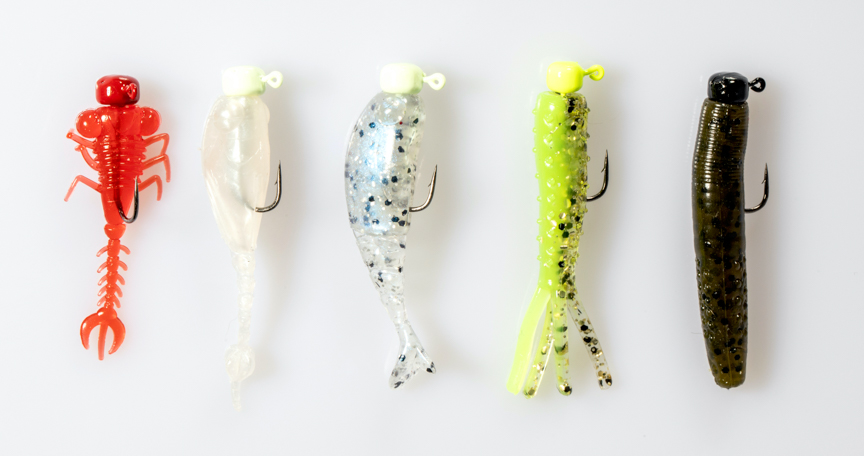
One other tip for triggering cool-water crappies, says Walker, involves the sniff test. “Scent is the final factor for triggering bites—especially big crappies in cool water. But not all scent attractants work the same.”
“There’s a natural connection between oil-based attractants and ElaZtech baits. Pro-Cure Super Gel Crappie & Panfish formula, for example, sticks to the material like glue. I like to marinate baits by squeezing a decent amount of the goo into bait bags. Let it sit overnight or longer. Like marinading a nice steak, Pro-Cure-soaked baits just get better and better. And after fishing a bait for an hour or so, when you no longer feel or smell the sticky stuff, simply drop it back into the bag, spread it around, and you’re back in business.”
While springtime anglers typically target shallow-water fish, Walker prefers to pursue bigger, less-pressured crappies in 5 to 15 feet of water—just outside eventual spawning zones. “Simply count the lure down to the right depth and begin a slow, steady retrieve. While retrieving, I’ll pause every 5 to 10 seconds. Let the bait stop and hang momentarily. I know the tail will hover; it won’t drop unnaturally below the jighead and turn fish off. It’s a real key to ‘talking’ lethargic crappies into biting.
“As a bass angler familiar with the toughness of ElaZtech, I spent years trying to slice and customize bigger worms into panfish-sized offerings. They worked, but the new Micro Finesse baits give me panfish profiles and actions I’m after, no knife needed.
“As more and more crappie anglers discover the advantages of superplastics for panfish—buoyant, super-soft and easy to activate and surprisingly durable—we’ll all be sitting down for a lot more crappie dinners.”
MWO
SHARE THIS POST
You may also like...
Did you enjoy this post?
You can be among the first to get the latest info on where to go, what to use and how to use it!
Ted Pilgrim
MidWest Outdoors works with more than 200 outdoor experts each year, who contribute articles based on their areas of expertise. MidWest Outdoors magazine offers more fishing and hunting articles than any other publication!
